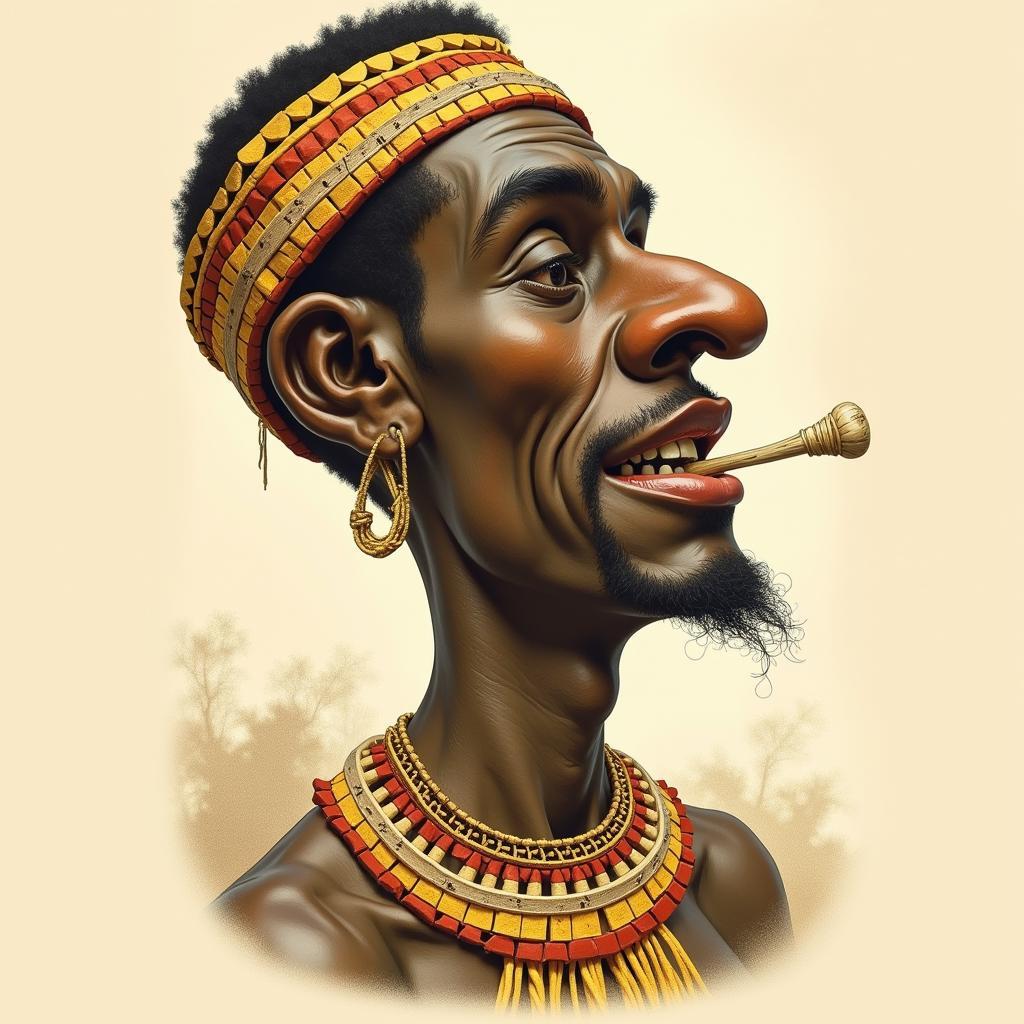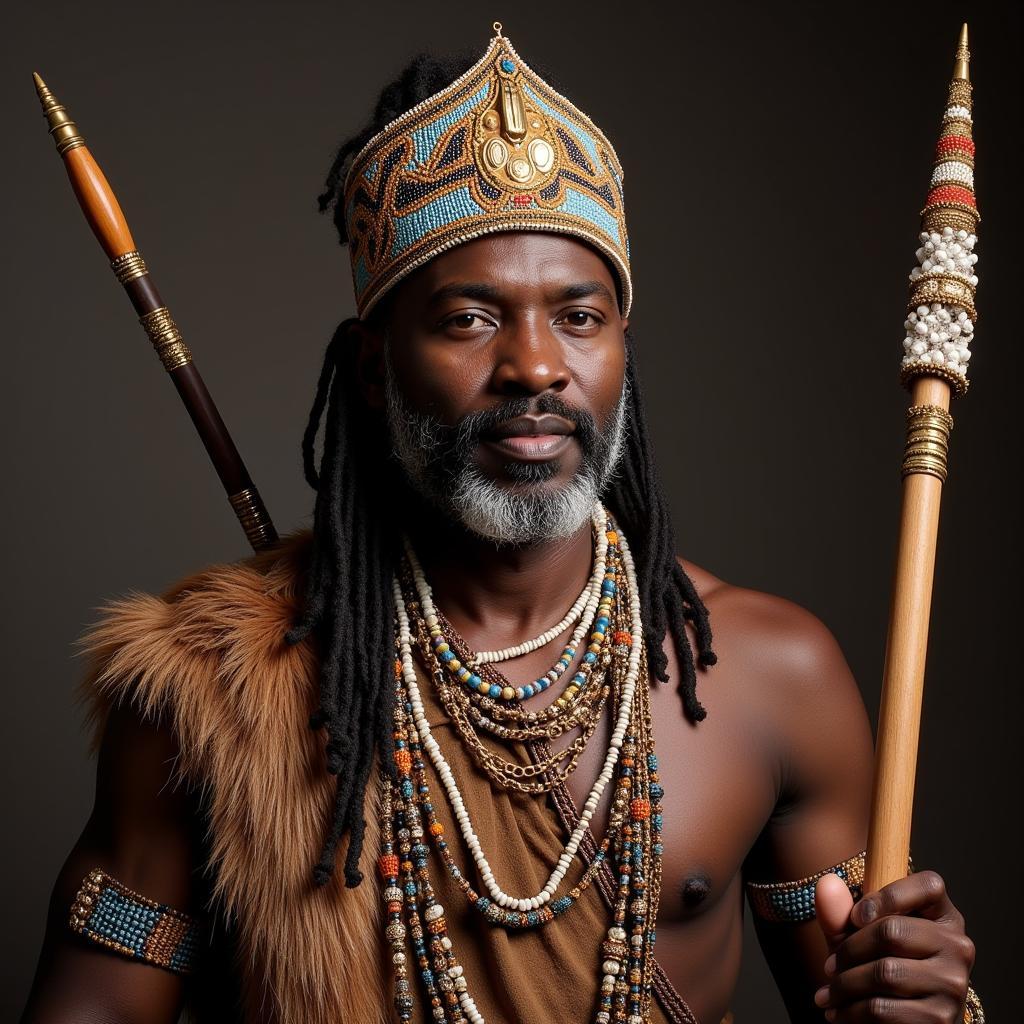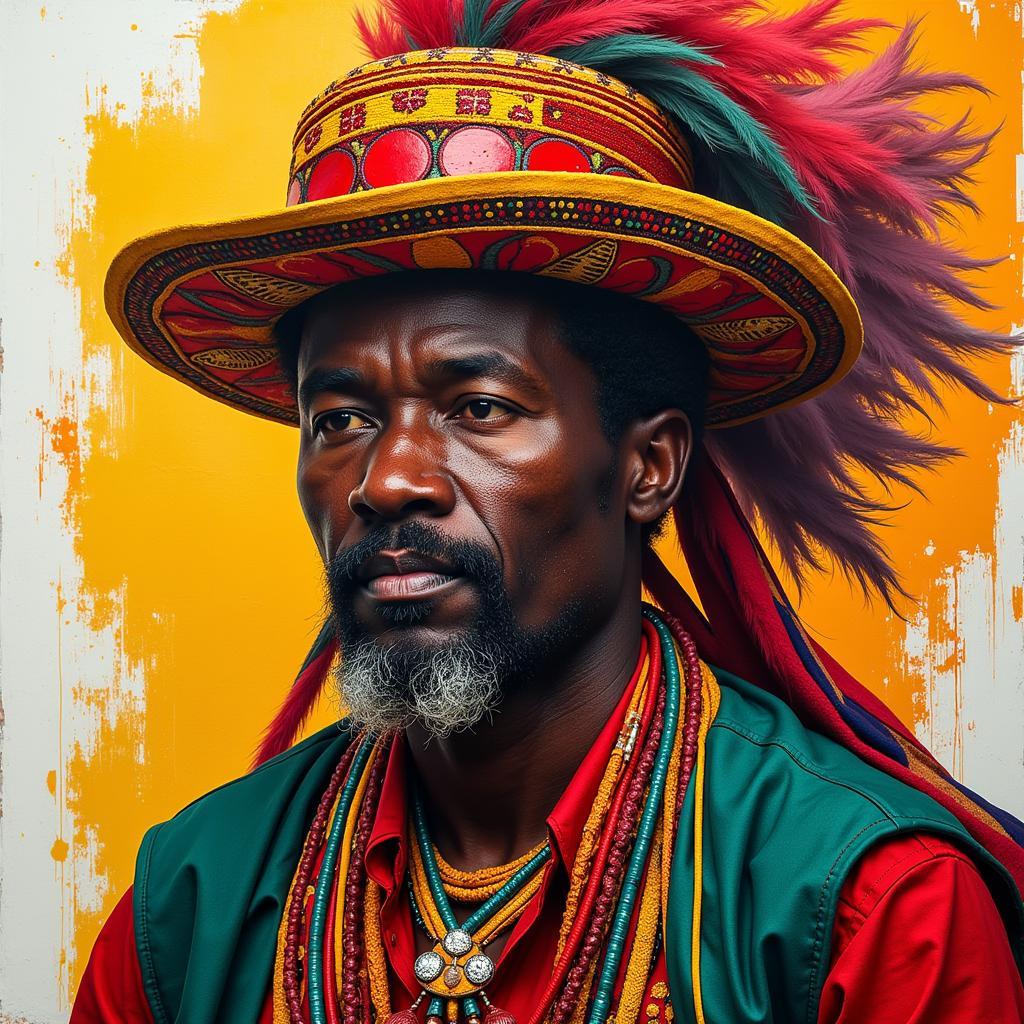The Enduring Symbolism of the African Chief Standing Traditional Cartoon
The African chief standing traditional cartoon, often depicted with exaggerated features and adorned in vibrant attire, has become a widely recognized image. While its origins may be rooted in caricature and stereotypes, understanding its evolution and symbolism reveals a complex narrative intertwined with colonialism, cultural representation, and evolving perceptions of African leadership.
Unmasking the Origins: From Colonial Caricature to Cultural Icon
 African Chief Colonial Caricature
African Chief Colonial Caricature
The image of the African chief standing tall, often wielding a spear and shield, first emerged during the colonial era. European colonizers, seeking to justify their exploitation and dominance, used cartoons and illustrations as a tool to dehumanize and ridicule African cultures. These early depictions often portrayed African chiefs as simple-minded, savage, and obsessed with tribal warfare. The exaggerated features and simplistic narratives served to reinforce the colonial narrative of European superiority and African inferiority.
Beyond the Caricature: Exploring the Authentic Symbolism
However, it’s crucial to recognize that the image of the African chief, stripped of its colonial baggage, holds deep cultural significance across many African societies. The chief, often a hereditary position passed down through generations, embodies leadership, wisdom, and the protector of his people.
The Chief as a Symbol of Leadership and Authority
 African Chief in Traditional Regalia
African Chief in Traditional Regalia
In many African cultures, the chief holds a position of great responsibility and authority. He is not merely a political figure but also a spiritual leader, often considered an intermediary between the people and the ancestors. He is responsible for maintaining harmony within the community, resolving disputes, and ensuring the well-being of his people. The chief’s attire, often adorned with intricate beadwork, animal skins, and feathers, reflects his status and the sacredness of his role.
The Chief as a Guardian of Culture and Tradition
Beyond political and spiritual leadership, the chief also serves as a custodian of culture and tradition. He is responsible for preserving the customs, rituals, and beliefs that have been passed down through generations. In a continent as diverse as Africa, the chief plays a vital role in maintaining the unique identity of his community.
Reclaiming the Narrative: The African Chief in Contemporary Art and Media
 Modern African Chief Portrait
Modern African Chief Portrait
Today, African artists and creatives are actively engaged in reclaiming and reinterpreting the image of the African chief. They are challenging the colonial narratives and presenting nuanced and authentic representations of African leadership. In contemporary art, music, and literature, the African chief is no longer a caricature but a complex figure who embodies both the challenges and triumphs of African societies.
The evolution of the African chief standing traditional cartoon from a colonial caricature to a symbol of cultural pride demonstrates the power of representation and the importance of understanding historical context. While the caricature may linger, it is essential to look beyond the distorted image and appreciate the depth and richness of African cultures and the true significance of their leaders.

